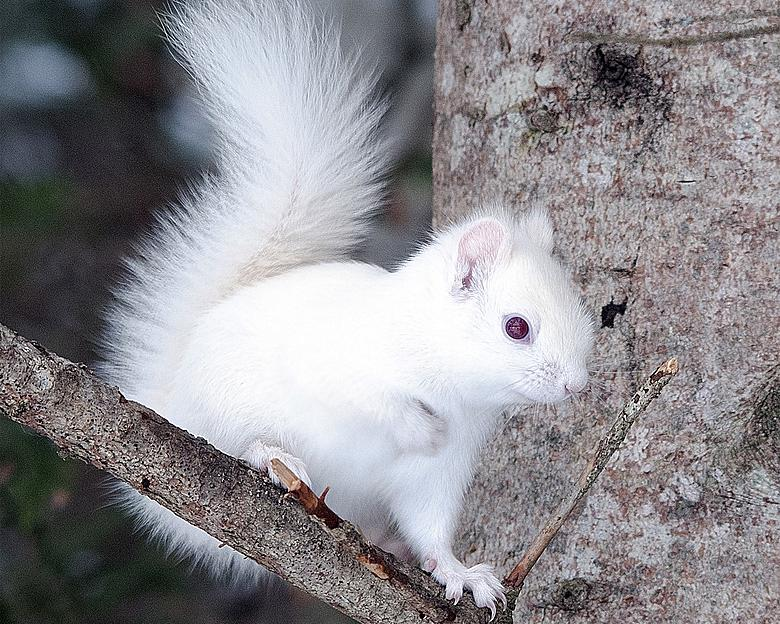Rajasthan
Albino Squirrel Spotted
- 25 Jun 2025
- 3 min read
Why in News?
A rare albino "sunflower" squirrel has been spotted for the first time in Rajasthan's Tonk district, a remarkable sight for wildlife enthusiasts and researchers.
- Though albino squirrels have been spotted before in Banswara and Dungarpur districts, such sightings are still extremely rare.
Key Points
Albino Squirrel:
- Appearance: Albino squirrels are distinguished by their pure white fur and pink or red eyes, resulting from a complete lack of melanin, the pigment responsible for normal coloration.
- Their eyes appear pink or red due to the visibility of underlying blood vessels.
- Genetic Cause: Albinism in squirrels is caused by a recessive genetic mutation that prevents the production of melanin. Both parents must carry the gene for an offspring to be albino. The mutation typically affects the enzyme tyrosinase, which is critical for melanin synthesis.
- Experts emphasize that there is no certainty that the albino squirrel’s offspring will inherit the same albino traits, as these are governed by genetic factors.
- In the region, squirrels typically give birth to two to four kits.
- The offspring of squirrels usually have a slate grey coloration, unlike the rare albino variant.
- Rarity: Albino squirrels are extremely rare. The odds of a squirrel being born albino are estimated at about 1 in 100,000, though some populations have localized clusters. Only a small percentage of white squirrels are true albinos.
- Colonies and Populations: The United States hosts large squirrel populations, including notable colonies of white or albino squirrels.
- In India, squirrels are widespread and common, with several native species such as the Indian palm squirrel and the hoary-bellied squirrel.
- Albino squirrels are extremely rare, but there have been documented sightings in various states, including Assam, Rajasthan, Gujarat, and Maharashtra.
- Survival Challenges: Albino squirrels face greater challenges in the wild due to their lack of camouflage, making them more visible to predators.
- They are also more susceptible to sunburn and skin cancer because of their lack of protective pigments.
- Behavior and Adaptations: Despite their unique appearance, albino squirrels behave similarly to their pigmented counterparts—foraging, climbing, and communicating with others.







